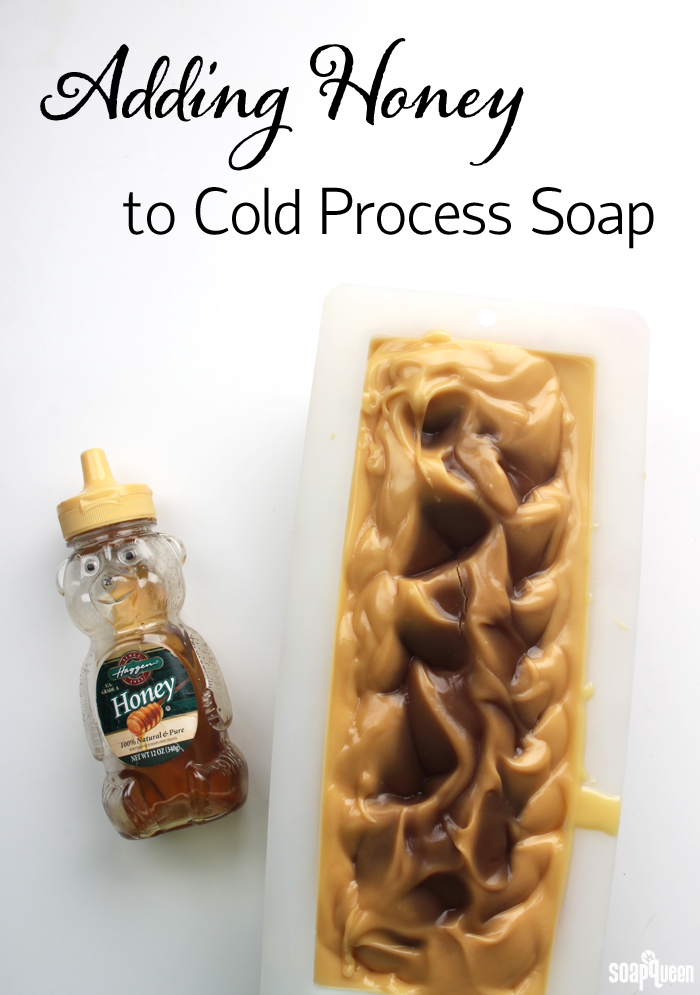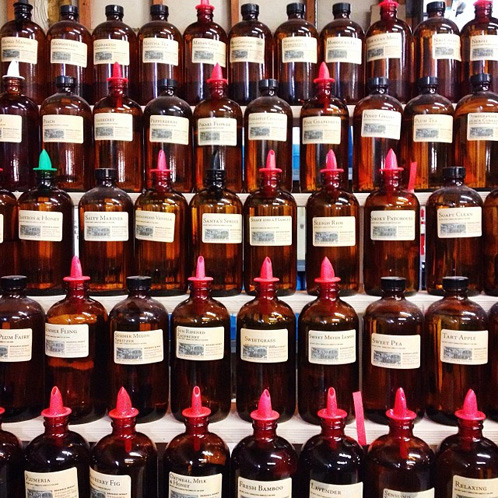
There are a wide variety of ingredients to customize handmade soap. Oils, colorants, additives and fragrances create a perfectly customized bar. Honey is a popular additive for cold process soap. It has various properties that make it appealing for skincare. In particular, honey is a natural humectant, which means it absorbs moisture from the air. Humectants are great for the skin, as they can help the skin retain moisture. Honey also contains antioxidants and natural sugars which can increase the lather of cold process soap.
While honey has some great benefits for soap and skincare, it can be tricky to work with. Adding honey to cold process soap means you are adding extra sugar. Sugar causes cold process soap to heat up. This also happens when using ingredients such as milk, fruit juices and purees, which also contain natural sugars. When soap heats up after poured into the mold, the soap goes through gel phase. ‘Gelling’ and ‘gel phasing’ in cold process soap refers to a part of the saponification (soapmaking) process where the soap gets warm and gelatinous – up to 180 degrees. Click here to read more about gel phase.
In many cases, gel phase is a good thing! It can result in brighter colors, and give the soap a shinier appearance. But when you’re working with a soap that contains extra sugar such as honey, you may want to avoid gel phase. The extra sugar can lead to an extremely hot gel phase. The hot gel phase can produce cracked soap and a kind of caramelization, which leads to a deep color within the soap. If this happens, the soap is still perfectly fine to use, but it may not be the color you want. In some cases, sugar combined with extreme heat can even lead to a soap volcano. Check out the volcano that occurred when I made soap using coconut milk.
In general, use about 1 teaspoon of honey per pound of soap. You can certainly use more, but keep in mind the more honey you use, the hotter your soap will get. Some soapers add their honey to the soap directly during trace. Others prefer to dilute the honey in a portion of the water in their recipe, and add this mixture at trace. If you’ve never worked with honey in cold process soap before, I recommend keeping your design very simple, as the honey can cause the soap to accelerate and thicken quickly. This can make swirl and complicated designs very difficult.

